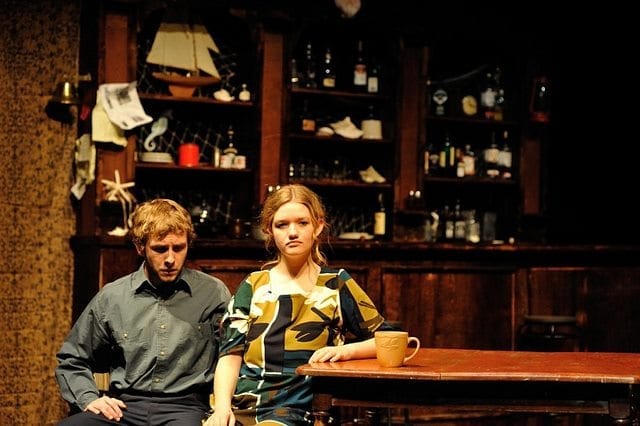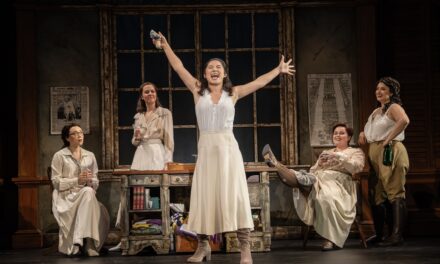OGDEN — The classic play, The Tempest, by William Shakespeare, is a tale about a father and his daughter marooned on an Island by family traitors seeking for the power the father, Prospero, held as the Duke of Milan. The story follows Prospero as he uses his magic, being a powerful wizard, to right the wrongs of the past and allow his daughter, Miranda, to become queen of both Naples and Milan.

Show closes April 23, 2016.
In Weber State University’s current production of The Tempest, director Jennifer A. Kokai has made some interesting interpretations that were quite beautiful and beneficial in some ways, but also left a few questions regarding interpretation in other ways. Perhaps the one that stands out more than others was the question of casting. Like the 2010 film adaptation of the same play, the character Prospero is played by a woman, in this cast by Kassie Winkler. In the film adaptation, the choice had been made to change the pronouns of the character. However in the WSU production the pronouns and story left Prospero as a male. There were also several other characters who were traditionally male characters played by females. The actresses did a fine job of portraying the characters, and I cannot say negative about their performances. This is especially true of Winkler, who was a joy to watch on stage. However, I am not sure I quite grasped the interpretation of the director. Was this gender switching a conscious choice to put a new spin on the characters? Was Prospero really supposed to be male? Or was this a product of a casting pool that lacked enough men for this production to be performed traditionally?

Kassie Winkler as Prospero. Photo by Amanda Wood Harris.
The scenic design, by Van Tinkham, was flawless. As most of the action happens upon an island, the stage was set up to feel much like a beach, and the colors and the sound effects made me feel that I could indeed be at such a location. Also, during the shipwreck in the opening of the play, the set design combined effectively with the lighting design of Daniel Morris to produce a wonderful and memorable scene. However, I did feel that the music in the background and the varied action on stage during that scene could be toned down slightly, as it detracted from the dialogue enough that a bit of the plot would have been lost to those unfamiliar with the storyline.
In addition, the make-up and hair designs (by Lindsay Blackman) and costume design (by Katie Rogel) were exquisite. I was most taken by the costuming and hair choices for the characters of Prospero, Ariel (played by Camrey Bagley Fox), Miranda (played by Monroe Howell), and Caliban played by (Callahan Crnich), where I could tell the imagination of the designers got to be used full force. The colors in the hairstyles, colors in the costuming, and colors in the makeup added an interesting, vibrant addition to these actors’ scenes.
The actors themselves were all enjoyable to watch. The characters of Prospero and Ariel were both fascinating on stage. Winkler and Fox had great chemistry together, and I could see both the personal conflict between them, as well as the care they had for one another. This was especially true towards the end of the play in a pivotal scene (which I do not want to revealing by giving away too much of the plot),which the two actresses portrayed well. Three of the comedic characters, Caliban, Stephano (played by Summer Sloan Alvery), and Trinculo (played by Colton Ward), were very amusing as they spent their time on the island getting decidedly more drunk and more willing to plot evil ways to destroy anyone in their path to power. I was especially impressed by Alvery’s use of physical comedy. Miranda and her love interest, Ferdinand (played by Colin Doxey), added the romantic elements typical of a Shakespearean play. However, Doxey and Howell did not just provide a shallow reading of young lovers. Rather, they were able to play their roles with sincerity and depth.
Overall, the production was well executed and the acting masterful. I would have preferred to have some of the director’s interpretation explained more within the program, though. However, the performances themselves as well as the design elements are strong enough to overlook the few flaws within the production.





